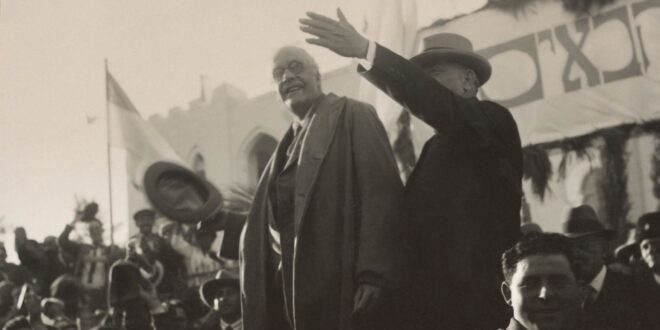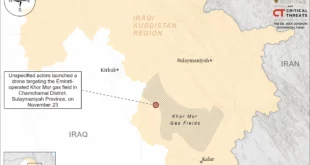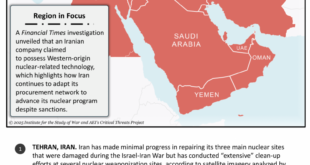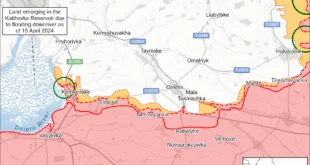Long read: British rule in Palestine during the 1920s and 1930s enabled Zionist colonisation at the expense of Palestinians.
With the allied victory and collapse of the Ottoman empire in world war one, Britain occupied Palestine which it ruled until 1948. This was formalised by the newly created League of Nations, which divided up the former Ottoman territories into ‘mandates’.
Britain was awarded Palestine as one such mandate in 1922. But British rule there was never neutral. The UK authorities blocked Palestinian rights, violently suppressed protests and prevented self-determination for the Palestinian Arab majority.
The mandate system is often described as preparing colonised peoples for independence. But Palestinian legal scholar Noura Erakat details how mandates were viewed by European powers as mechanisms for continuing control over conquered areas.
Palestine was exceptional because of the declaration issued in 1917 by UK foreign secretary Arthur Balfour which pledged to support the establishment of a “Jewish national home”.
The Balfour declaration stated that “nothing shall be done which may prejudice the civil and religious rights of existing non-Jewish communities in Palestine”. But it amounted to giving Palestine away to incoming, mostly European, Jewish settlers, over the heads of the indigenous Arab population.
Palestinian intellectual Edward Said called the declaration a “flat disregard of both the presence and the wishes of the native majority.”
Thus successive British governments worked to lay the foundations for Zionism, the nationalist movement to establish a Jewish state in Palestine. London provided crucial backing to the Zionist project during the interwar years.
This prevented Palestinian freedom and sowed the seeds for the rebellion which erupted in 1936.
‘An eventual Jewish state’
Following intense lobbying by the Zionist movement, under the leadership of Chaim Weizmann, the Balfour declaration’s text was written into the terms of Britain’s Palestine mandate verbatim, binding the wartime – and all subsequent – governments to fulfil it.
Despite British efforts to placate them, Palestinian fears were well-founded. At a private dinner in Balfour’s home in 1922, he, alongside prime minister David Lloyd George and colonial secretary Winston Churchill, assured Weizmann that by the term “Jewish national home” they “always meant an eventual Jewish state.”
Lloyd George convinced the Zionist leader that for this reason Britain would never allow representative government in Palestine.
Adding insult to injury, British officials refused to recognise any Arab representation in Palestine until the terms of the mandate were accepted in full, which meant accepting Balfour’s declaration.
Palestinian historian Rashid Khalidi describes this as “an extraordinary gift” to the Zionist movement. The mandate “substantially amplified the declaration’s commitments”, only recognising one people – the Jewish people – as having national rights in the country.
Discriminatory mandate
Alongside Balfour’s declaration, the articles of the mandate were heavily stacked against Palestinians. Nowhere was there any reference to Palestinians as a people with national or political rights. In fact, seven articles were devoted to assisting Zionism.
For example, Article 2 provided for self-governing institutions but only to Palestine’s Jewish minority (the yishuv). The Zionist movement, organised in Palestine as the Jewish Agency, was explicitly designated as the official representative of the country’s entire Jewish population, even for Jews who considered themselves non- or anti-Zionist.
No such representation was ever afforded to the Arab Muslim and Christian majority.
Meanwhile, Article 4 gave the Jewish Agency quasi-governmental status as a “public body” with wide-ranging powers in economic and social spheres and the ability “to assist and take part in the development of the country.” It also afforded the Zionist movement international diplomatic status, something never granted to Palestinians.
The mandate was tasked in Article 6 with facilitating Jewish immigration and encouraging “close settlement by Jews on the land” enabling significant growth of the Jewish population and their acquiring strategic locations across the country.
Furthermore, Article 7 provided for a nationality law for Jews to acquire Palestinian citizenship. However, this same law denied nationality to Palestinian Arabs who had emigrated to the Americas during the Ottoman era and now wanted to return.
So Jewish immigrants into Palestine could acquire Palestinian nationality, while native Palestinian Arabs who were abroad when Britain’s occupation began were denied it.
Other articles allowed for the Jewish Agency to take over or establish public works and exert control over much of the yishuv’s school system and made Hebrew an official language.
All this meant that Palestinians were denied democratic representative institutions with any real power in their own country while incoming Zionists were given official British backing to develop their own proto-state to pursue their colonial ambitions.
As Khalidi describes, the British “essentially allowed for the creation of a Zionist administration” parallel to their own, which was “tasked with fostering and supporting it.”
Colonisation
Palestine under the British mandate was governed by seven high commissioners. The first to be appointed, in 1920, was Herbert Samuel, a Zionist stalwart. Samuel then toured Palestine and visited ten Jewish colonial settlements, writing about them glowingly while downplaying the extent of Arab opposition.
Samuel’s support for Zionism was so vocal that figures like then foreign secretary Lord Curzon objected to his appointment, rightly predicting it would provoke a backlash. Palestinians responded with mass resignations from government jobs, with both Muslim-Christian and women’s groups writing letters of protest.
As Mazin Qumsiyeh details, Samuel gave economic concessions to the Zionists, allowing them to establish an independent police force, more colonies and industries while also appointing them to sensitive government positions, including concerning immigration policy.
In 1920, Samuel issued a series of regulations on land ownership making it easier for the Zionist movement to acquire vast tracts of land. He appointed another staunch supporter of Zionism, Norman Bentwitch, to administer land registration and allowed the formation of the Haganah (the forerunner of Israel’s army) to “defend” the expanding Zionist colonies.
Samuel reassigned communally-owned farmland to Zionists or wealthy Arab owners who in turn could sell it to the Zionist movement. He also passed laws where absentee landowners could not profit from use of their lands but could instead sell them.
In addition, Samuel allowed the transfer of large tracts of public lands – the majority used by Palestinians – for the exclusive use of Zionists. As a result, thousands of Palestinian peasants (fellaheen) were forcibly evicted from lands they had lived on for generations.
Supporting Zionism
Rosemary Sayigh outlines how important British support was to Zionism, providing a “protected carapace” for it while weakening the indigenous economy and impoverishing Arab peasants.
This, she argues, made the eventual dismemberment of Palestinian society the “logical outcome of three decades of a systematically produced inequality” – militarily, politically and socially – between them and the Zionists.
While some British figures cautioned against Britain taking such stridently pro-Zionist positions, their concerns were repeatedly overruled by governments in London which refused to deviate from their policies.
The Zionist movement also had a great deal of access to British government ministers to lobby against any such changes, so much so that it even annoyed senior British officials in Palestine.
All this ensured that under the mandate, an embryonic Jewish state began to emerge, with Palestinian uprooting and dispossession as a result. British support during the crucial years of the 1920s and early 1930s was essential to the success of this project.
Frustrating Palestinian organising
Palestinian efforts to organise for their rights faced immediate obstacles. Before the mandate was even established, Britain ran a military regime from 1917-20, where publication of news of the Balfour Declaration was banned and newspapers were not able to reappear in Palestine for almost two years.
In a cruel irony, some of the last people to hear about the declaration were Palestinians themselves, who often learned of it slowly through word of mouth and from Egyptian newspapers brought in by travellers.
Once it became possible Palestinians began organising politically. This included petitions to the British, to the Paris Peace Conference and the League of Nations.
From 1919 to 1928, seven Palestine Arab congresses were held, planned by a country-wide network of Muslim-Christian societies. These congresses demanded independence, rejection of the Balfour Declaration, support for majority rule and an end to unlimited Jewish immigration and land purchases.
The congresses established the Arab Executive, the unofficial representative of Palestinian demands, which met repeatedly with British officials in Jerusalem and London. However, the British refused to recognise the congresses or its leaders. One was even held in Syria because of Britain’s ban on Palestinian organising.
Rather than address Palestinian demands, Britain replicated its “divide and rule” policy used in other colonies like Ireland and India. To temper Arab opposition, the British established the Supreme Muslim Council, appointing members from the Jerusalem-based Palestinian elite, intending to split the cross-communal Arab opposition to British rule.
Haj Amin al-Husseini, appointed by Samuel as grand mufti of Jerusalem, was selected to lead it. Husseini’s role collaborating with Britain while helping to restrain – and guard his own privileged position over – wider Arab society in Palestine during this period would prove disastrous for Palestinians, something which suited both the Zionists and their British patrons.
Repressing Palestinian uprisings
Palestine in the 1920s and early 30s experienced repeated demonstrations, and calls for general strikes and uprisings against British rule and Zionism. This occurred at the same time as other rebellions across the Middle East against European colonial rule.
The April 1920 Nabi Musa unrest in Jerusalem, the May 1921 Jaffa disturbances and the August 1929 Wailing Wall/Al-Buraq uprising all involved violent, sporadic riots, directed against British authorities and Jewish settlements across Palestine, who Palestinians saw as representative of the growing Zionist takeover of their country. British troops and Zionist paramilitaries responded fiercely, and each disturbance left many people dead.
In the early 1930s, huge demonstrations occurred in cities including Jaffa, Haifa and Jerusalem as well as riots in Nablus. Each was met by hails of British bullets, killing dozens of people. Bystanders were also killed, including two children, six-year-old Said Judeh and ten-year-old Deeb Saleem.
Alongside authorities firing on Arab crowds with live ammunition, Herbert Samuel responded to the 1921 disturbances with collective punishment, declaring a state of emergency and ordering airstrikes against Palestinian villages.
After 1929, British forces carried out raids against Palestinian villages, detaining and then brutalising Arabs in custody, refusing applications for bail and imposing collective fines against entire villages.
.
Discriminatory punishment
Britain’s punishment of alleged perpetrators brought accusations of discrimination.
While in 1920 the British sentenced two Arab dignitaries at Nabi Musa, near Jericho, to ten years’ imprisonment each, they released future Zionist leader Ze’ev Jabotinsky within three months of his 15-year sentence.
In 1929, Britain executed three Palestinian men – Fouad Hijazi, Atta al-Zeer, and Mohammed Jamjoum – all for murder, while a Jewish man also convicted of murder during the riots had his sentence reduced and was eventually released.
The unrest of the 1920s is frequently depicted by supporters of Israel as involving Arab antisemitism against Jews, often labelling them ‘pogroms’. Yet describing them this way is a misrepresentation and has been rejected by some Israeli scholars as a misuse of the term.
Two separate British investigations refuted this suggestion at the time. The Haycraft Commission of Inquiry and the 1930 Shaw Commission, while both condemning Arab violence, pointed to political causes of the unrest, specifically Arab fears of continued Jewish immigration and land purchases.
Both investigations made clear that the violence was motivated by anti-Zionism, not antisemitism. In fact, many Jews were saved by Arabs sheltering them in their homes.
Despite both inquiries recommending a limit on Jewish immigration and addressing Arab grievances, the British authorities did not change course. After initially suggesting some adjustments, following intense Zionist lobbying they affirmed to continue their policies.
Palestinian scholar Rana Barakat describes 1929 as marking a “historical watershed moment” as a “major episode of sustained, nation-wide resistance” that “began a more volatile phase of Mandate rule.”
She describes how in its aftermath Britain introduced a new legal process to preserve control and suppress Arab resistance, but instead of dissipating Palestinian anger these new laws strengthened it.
The Black and Tans: from Ireland to Palestine
Alongside tactics used in other colonies, Britain transported personnel over to Palestine. As David Cronin writes, following a recommendation from then colonial secretary Winston Churchill, the Colonial Office opted to establish a “picked force of white gendarmerie”, bringing in auxiliary police recently stationed in Ireland.
Personnel from the Royal Irish Constabulary (RIC) and the notorious “Black and Tans” – world war one veterans who joined the RIC – were sent to Palestine. Whitehall briefing papers drew attention to strong similarities between their actions in Ireland and Palestine.
These forces had committed brutal crimes during the Irish War of Independence, and were previously under the command of Henry Hugh Tudor who admitted that the gendarmerie was sent to Palestine “to resist the Arab attempt at self-determination.”
Colonial police officer Douglas Duff, who served in Ireland, was among the first to arrive in Palestine. His accounts there indicate that Churchill’s views towards Palestinians were shared by members of the force he helped establish.
Duff details the racial epithets used against both Arabs and Jews by the auxiliaries and shares accounts of their violence. In one case, after charging Palestinian crowds during a riot in Nablus, one of the gendarmes brandished a cigarette tin containing pieces of a man’s brain he had splintered with his rifle butt, keeping them as a trophy.
Duff himself gained a reputation for brutality which he meted out repeatedly to Palestinian civilians while reportedly imparting his torture tactics to Jewish members of the Palestine Police.
While the gendarmerie was disbanded in 1926, many former Black and Tans continued to serve in the police.
Izz ad-Din al-Qassam and the road to revolt
The rise of Nazi Germany led to a massive increase in Jewish emigration. After Britain and the United States cruelly restricted entry for Jewish refugees, many were diverted to Palestine. The country’s Jewish population increased to almost 30 percent.
The inflow of capital into Palestine reached a new level. Poor indebted peasants had no choice but to sell their land and entire Palestinian Arab villages disappeared, with the fellaheen evicted. Gardner Thompson describes how “the momentum of colonisation towards the Jewish homeland markedly intensified” with Arab perceptions of rapidly growing settlement and their own dispossession being a “primary underlying cause” for the subsequent unrest.
As immigration and land purchases increased on a scale never seen before, the British did little to address Arab landlessness and impoverishment. From 1933-35 Arab protests and rioting increased, indicating the strength of anger and loss of faith with the elite Palestinian leadership. Britain often responded with gunfire, killing scores of people.
Anger only increased when in October 1935, at Jaffa port, dockers were unloading barrels off a ship when one broke open to reveal guns and ammunition destined for Zionist militants. Bitterly described decades later by elderly Palestinians as the ‘Barrels incident’, Britain’s failure to carry out arrests fuelled the perception that it was enabling the supply of illicit arms to the Zionists.
This somewhat resembled the truth. After Chaim Weizmann admitted to Churchill in 1922 that Zionists were smuggling in weapons, Churchill replied “we don’t mind, but don’t speak of it.” In 1939, Weizmann praised successive high commissioners for tacitly accepting that settlers might smuggle arms in.
Tens of thousands of Palestinian peasants were made homeless by the land sales, flocking to the cities in search of work. Enabled by Britain, Zionist policies of “Hebrew labour” (relying exclusively on Jewish workers) further aggravated the disparity in both the availability of jobs and wages for Arabs.
Many Palestinians worked as cheap unskilled labourers, living in destitution. This became fertile ground for the itinerant Syrian preacher and fighter, Sheikh Izz ad-Din al-Qassam, who gained a following among the dispossessed peasant workers, advocating armed struggle.
In his seminal study of the 1936-39 rebellion in Palestine, Ghassan Kanafani outlines how the deepening of this crisis created the conditions for that uprising to break out. Al-Qassam’s killing by British forces in 1935, and the huge popular outpouring of support for him among the Palestinian poor, would set the rebellion in motion.
Britain’s attempt to remedy the situation by new offers for a legislative council and a limited ban on Jewish immigration came too late. The road to revolt had been paved by two decades of Zionist colonisation in Palestine, enabled by British imperial policies.
 Eurasia Press & News
Eurasia Press & News



